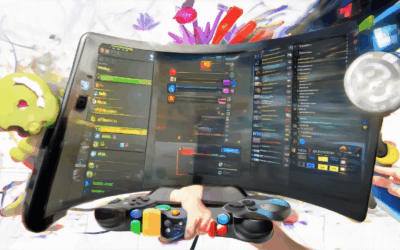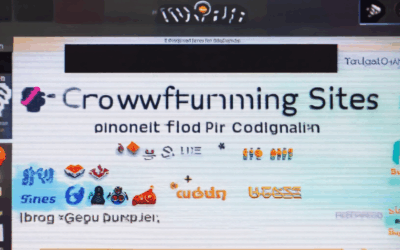Igniting Your Game Developer Portfolio: A Comprehensive Guide to Success
Creating a standout game developer portfolio is essential for showcasing your skills and breaking into the competitive world of game development. Whether you’re a seasoned professional or an aspiring developer, your portfolio serves as a visual resume, offering potential employers or clients a glimpse into your creative abilities and technical expertise. In this comprehensive guide, we’ll explore everything you need to know to build, enhance, and leverage your game developer portfolio for success.
A well-crafted portfolio isn’t just a collection of your work—it’s a strategic tool designed to highlight your unique style, technical prowess, and passion for game development. From choosing the right platform to curating your best projects, we’ll dive into the key elements that make a game developer portfolio effective and memorable. We’ll also discuss the importance of showcasing your work across various platforms, leveraging community networks, and standing out in a crowded market. By the end of this guide, you’ll be equipped with the knowledge and tools to create a portfolio that sets you apart and opens doors to exciting opportunities.

Do Game Developers Need a Portfolio?
Yes, having a portfolio is essential for game developers to showcase their skills, creativity, and experience. Here’s why:
- Building a Strong Personal Brand: A portfolio acts as a visual resume, demonstrating your expertise and unique style. It helps establish you as a serious and passionate creator in the industry.
- Showcasing Skills: Your portfolio allows potential employers, clients, or collaborators to see your work, from concept art and character designs to game mechanics and level layouts.
- Demonstrating Passion: A well-curated portfolio reflects your dedication to your craft and provides insight into your creative process and vision for games.
- Helping with Job Applications: Recruiters and hiring managers often look for portfolios to evaluate technical and artistic abilities before scheduling interviews.
- Atracting Commissions and Contracts: Freelance clients and game studios often request portfolios to assess your capabilities and decide whether to hire you for specific projects.
- Staying Updated with Industry Trends: By regularly updating your portfolio, you stay connected with the latest in game development and keep your skills relevant in a fast-evolving field.
By investing time into building a high-quality portfolio, you position yourself as a competitive and market-ready game developer.
How to Make a Portfolio for a Game Developer
To create an effective portfolio for a game developer, follow these organized steps:
- Choose a Platform: Opt for a user-friendly platform like Carrd or Wix to build your portfolio without extensive coding knowledge. These platforms offer customizable templates suitable for various skill levels.
- Organize Content:** – **Gallery Section:** Include high-quality images of your game assets, such as screenshots and concept art. – **Categories:** Create separate sections for different types of work, such as 2D/3D games, game mechanics, or sound design. – **Videos/Demos:** Embed gameplay videos on platforms like YouTube or Vimeo to showcase functionality and engagement.
- Write a Bio:** – Craft a concise bio highlighting your passion for indie games and unique approach to design. – Emphasize your expertise and what sets you apart, balancing professionalism with personal touches.
- Technical Considerations:** – Ensure your portfolio is mobile-friendly by using responsive design features offered by your chosen platform. – Optimize images with descriptive alt text for better SEO and accessibility.
- SEO Optimization:** – Research relevant keywords related to game development and incorporate them naturally into titles, descriptions, and content. – Use meta tags and headers effectively to improve search engine visibility.
- Promotion:** – Share your portfolio on social media platforms like Twitter, Instagram, and LinkedIn. – Engage with game development communities through forums and groups to attract potential visitors.
- Monetization and Services:** – Consider offering services via your portfolio, such as portfolio reviews or workshops. – Add a contact form or link to your resume to showcase your availability for hire.
- Continuous Updates:** – Regularly update your portfolio with new projects and seek feedback to refine your work. – Use this platform as a tool for personal growth and skill enhancement.

What Should a Developer Portfolio Contain?
A well-crafted developer portfolio is essential for showcasing your skills, experiences, and expertise to potential employers or clients. Here’s a breakdown of what it should ideally include:
1. Project Showcases
- Highlight your best work by creating dedicated sections for each major project.
- Use before-and-after comparisons to demonstrate your impact.
- Organize projects by category (e.g., web development, mobile apps, game development) for better navigation.
2. Skills and Expertise
- Clearly list the technologies, frameworks, and tools you’re proficient in.
- Mention programming languages, front-end/back-end tools, and any libraries or APIs you’ve worked with.
- Include certifications or courses you’ve completed to add credibility.
3. Testimonials and Feedback
- Add quotes from past clients or colleagues who can vouch for your work.
- Share feedback received during project deliveries to highlight your strengths.
4. Personal Statement or Bio
- Write a brief bio outlining your career goals, passion for development, and unique qualities.
- Share your journey, including how you got into development and any significant milestones.
5. Open-Source Contributions
- Showcase any open-source projects you’ve contributed to, as this demonstrates collaborative spirit and real-world application of your skills.
- Provide links to your GitHub, GitLab, or Bitbucket profiles.
6. Education and Certifications
- List any relevant degrees, diplomas, or certifications you’ve earned.
- Include information about workshops, meetups, or conferences you’ve attended.
7. Tools and Workflow
- Detail the tools and workflows you use daily, such as IDEs, version control systems, debugging tools, etc.
- Discuss your approach to project management and collaboration.
8. Case Studies
- Create detailed case studies for complex projects, explaining the challenges faced and solutions implemented.
- Include outcomes, metrics, and client feedback to illustrate your effectiveness.
9. Social Media Presence
- Link to your professional profiles on platforms like LinkedIn, Twitter, or GitHub.
- Share articles, tutorials, or insights you’ve written to showcase your thought leadership.
10. Contact Information
- Provide your email address, portfolio link, and any other relevant contact details.
- Include a simple contact form for easy inquiries.
By organizing your portfolio in this manner, you’ll not only make it visually appealing but also easier for potential employers to evaluate your qualifications and fit for their team. Remember to keep your content updated and relevant to stay ahead in the competitive job market.

Who is the No. 1 game developer in the world?
As of recent reports, Sony Interactive Entertainment is widely recognized as the leading global video game company, ranking at the top of the industry. With its extensive library of games, including iconic franchises like PlayStation, Sony continues to dominate the market. Microsoft Gaming, encompassing Xbox and notable studios like Bethesda, is a formidable competitor, known for titles such as Starfield and The Elder Scrolls series. Tencent, owning influential studios like Riot Games and Epic Games, also holds significant sway, particularly through platforms like Fortnite. Nintendo remains a key player, celebrated for its first-party games and hardware success. While there may be variations in rankings depending on the metric, Sony consistently leads in revenue and market presence, making it the No. 1 game developer globally.
For more details on the top game developers and companies, visit our Top Game Developers page.
Who Is the Richest Solo Game Developer?
The world of independent (indie) game development is filled with talented individuals who have achieved remarkable success against all odds. Among the most notable names, several solo developers have made significant fortunes through their creations. Here’s a look at some of the wealthiest and their journeys:
1. Eric Barone – Creator of “Stardew Valley”
- Net Worth : Estimated at $100 million
- Story : Eric Barone, a former software engineer, quit his job to focus on developing “Stardew Valley.” Launched in 2016, the game became a global phenomenon, selling over 20 million copies across various platforms. Revenue from sales and microtransactions (like in-game currency) contributed to his massive wealth.
2. Tim Searle – Developer of “Axiom Verge”
- Net Worth : Estimated at $50 million
- Story : Known for his work on “Axiom Verge,” a retro-inspired action RPG released in 2017, Tim Searle built his success through meticulous planning and a dedicated fanbase. The game’s success on multiple platforms helped him amass a considerable fortune.
3. Arielle Ortega – Creator of “Hades”
- Net Worth : Estimated at $30 million
- Story : A former video game tester turned developer, Arielle Ortega crafted “Hades,” a critically acclaimed roguelike released in 2020. Its popularity on Steam and subsequent success on other platforms contributed to her earnings.
4. Ryan Walker – Developer of “Ori and the Blind Forest”
- Net Worth : Estimated at $25 million
- Story : Known for his unique art style and storytelling, Ryan Walker’s “Ori and the Blind Forest” was both a critical and commercial success upon its release in 2017. Its success across multiple platforms has bolstered his net worth.
Key Factors Contributing to Their Success:
- Multiple Platform Sales : Selling games across PC, consoles, and mobile ensures broader reach and higher revenue potential.
- Engaging Business Models : Strategies like free-to-play with monetization methods like in-game purchases can significantly boost earnings.
- Dedicated Fanbases : Building a loyal audience through excellent gameplay and storytelling often translates into long-term financial success.
While Eric Barone stands out with his record-breaking “Stardew Valley,” the indie game scene is full of success stories. Developers like Tim Searle, Arielle Ortega, and Ryan Walker demonstrate that innovation and dedication can lead to extraordinary achievements in the gaming world. As the industry evolves, we can expect even more tales of solo developers striking it rich.
Learn more about resources for indie game developers .

Who is the 13-Year-Old Game Developer?
Alexey Pajitnov is the 13-year-old game developer known for creating the iconic video game Tetris. Born in 1971, Alexey developed Tetris while working at the Dorodnitsyn Computing Centre in Moscow, Russia. His innovative puzzle-solving concept quickly captivated audiences worldwide.
After defeating the original version of Tetris, Alexey met the game’s co-creators, Hank Rogers and Robert Stein, who were amazed by his talent and ingenuity. This encounter marked the beginning of a partnership that would lead to further advancements in the Tetris series.




0 Comments